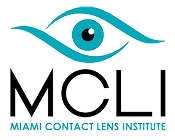When your child has vision problems, it can be challenging to make their life easier. There is plenty of conflicting advice online about what parents should do. However, as eyecare specialists who deal with complex ocular conditions, we find that it’s best when a child has a myopia-friendly learning environment in their own home. Let’s review the most important aspects to keep in mind after learning that your child has myopia.
Understanding Myopia
Myopia is commonly referred to as nearsightedness. It occurs in children when their eye balls are oval-shaped instead of round. When the eyeball is elongated from front to back, light entering the eye fallsshort of the retina, making distant objects appear blurry. Myopia starts in childhoodor adolescence and gradually progresses until early adulthood.
Children typically don’t have the words to explain that their vision is blurred, but they may display some of the common signs of myopia. You will notice that your child rubs their eyes frequently, squint soften, regularly complains of headaches, and struggles to participate in class. If you suspect that your child has myopia, see an eyecare practitioner as soon as possible.
The Importance of a Myopia-Friendly Home
If yourchild has been diagnosed with myopia (nearsightedness), making a few changes at home can help protect their vision and support their learning. A myopia-friendly space is designed to reduce eye strain and make it easier for your child to focus on school work without added visual stress. Simple adjustments, like improving lighting, encouraging outdoor play, and limiting screen time, can make a big difference in helping your child feel comfortableand stay on track with their development.
It’s also essential to create a space that helps with myopia management. Managing the progression of myopia is critical for the long-term health of your child’s eyes. Uncontrolled myopia can cause serious issues later in life, such as macular degeneration and glaucoma. There are also several treatments, including atropine eyedrops, daytime multifocal lenses, and corneal reshaping lenses that can slow myopia progression and protect yourchild’s ocular health.
Creating a Myopia-Friendly Environment
When your child gets home from school, they shouldhave a sanctuary where they can do their homework calmly and recharge for the next day. There are several ways to adapt your home to better suit your child’s vision challenges. Even children using eye drops or specialty lenses need a lifestyle and day-to-day environment that supports myopia management.
Adequate Lighting
When a child engages in activities like homework, reading, and coloring, it’s crucial to have proper lighting, as straining to see in low light can put additional stress on the eyes. Natural light is always best, so keep the curtains open whenever possible. When it gets dark, lighting becomes even more important, as there is no ambient lighting for the eyes to absorb, causing further strain. Use adjustable lamps to eliminate dark spots, shadows, and glare.
Facilitate Outdoor Time
Sunlight plays a key role in keeping your child’s eyes healthy. Spending time outdoors and focusing on objects at different distances can support medical treatments for myopia. Natural light helps control how quickly the eyeball grows; specifically, it can slow down the abnormal elongation that causes myopia to worsen. Without regular exposure to sunlight, myopia can progress more quickly, increasing the risk of developing high myopia, which is linked to serious eye conditions later in life.
Limit Screen Time
With screens present in every home, it’s understandable that many parents rely on TVs, tablets, and smartphones to occupy their children. However, extended screen time can be detrimental to eye development. Prolonged, passive use of digital devices can cause eye strain, which may worsen myopia and disrupt healthy eye development.
Schools often require the use of computers for assignments and virtual learning, so parents must find a balance between their children’s academic needs and the protection of their eye health. Incorporating healthy habits, such as the 20-20-20 rule, can be highly beneficial. Afterevery 20 minutes of screen time, have your child look at something 20 feet away for at least 20 seconds to reduce eye fatigue.
For young children, particularly those between two and five years old, it’s best to limit screen time to no more than one hour per day. When you do let them watch TV, choose high-quality, age-appropriate programming. As children grow, it’s reasonable to become more flexible with screen time limits, but you must maintain boundaries with screens to slow myopia progression and support eye health.
Focus on Nutrition
A well-balanced diet can have a significant impacton ocular health. Foods rich in vitamins A, C, and E, as well as omega-3 fatty acids, play a crucial role in maintaining healthy vision. Consider adding leafy greens, carrots, citrus fruits, nuts, and fish to your family’s daily meals. Hydration is also essential, so encourage your child to drink water and limit the availability of sugary drinks to support eye health.
Safeguard Your Child’s Long-Term Eye Health
If your child is struggling with myopia or you suspect that they may be nearsighted, schedule a comprehensive eye exam at Miami Contact Lens Institute. Our expert eyecare practitioners will help you find the perfect myopia management method and explain how you can keep your child’s eyes safe.

.jpg)
